Media Globe Σ
※This product has been discontinued since March 31, 2021.
The Media Globe series is used by more than 120 leading planetariums both overseas and in Japan, and with the addition of the latest technology to the traditional technology that traces its origins back to the days when Konica Minolta Planetarium was Chiyoda Kogaku Seikō, K.K. (Chiyoda Optics and Fine Engineering, Ltd.), it represents the evolution of planetariums to the 18th generation, known as “Σ”.
Media Globe Σ
This is the latest digital planetarium that was developed based on the concept of pulling together all of Konica Minolta Planetarium Co., Ltd.’s technology through a fusion of Konica Minolta’s cutting edge optical technology and high contrast, ultra-high resolution video projection.
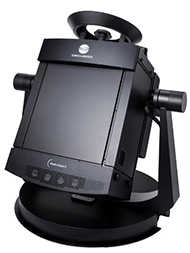
*Media Globe is a registered trademark of Konica Minolta Planetarium Co., Ltd.
As well as naturally being equipped with the general planetarium functions used in science education such as the star movements and moon/sun movements, these products are equipped with the database for the National Astronomical Observatory of Japan’s 4D2U project on top of a maximum of 12.4 grade fixed star 3D positional data (110,000 or more stars) and proper motion data spanning one million years B.C. to one million years A.D. As well as being able to represent the night sky as seen from the Earth and movements of celestial bodies in an easy-to-understand way, also possible are real time stereoscopic simulation of trips around the solar system, the Milky Way, back in time, and to the edge of the universe 13.8 billion light years away based on the latest research data.
And on top of the ability to reproduce celestial bodies as seen from Earth, the ability of projectors in this series to perform a range of simulations such as adding layers of natural phenomenon like clouds, lightning, rain, snow, and aurora to the background, showing high resolution overviews of the Earth’s surface, and projecting data relating to the Earth’s environment also makes them effective for use in learning, showing programs, and learning about the environment.
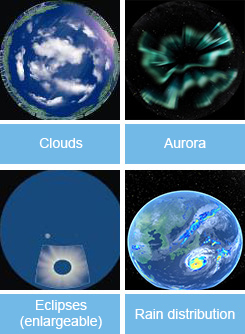
Earth Mode (the night sky as viewed from the Earth)
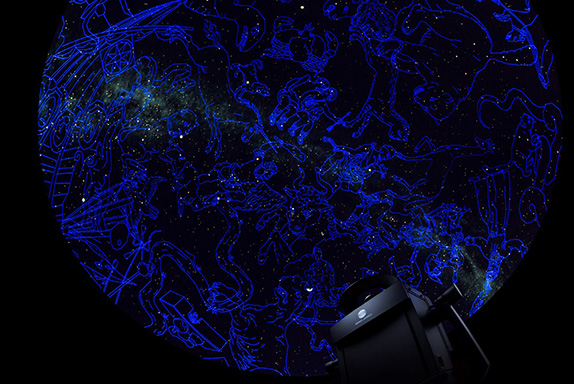
▼Features
- Easy-to-understand display of star movement by leaving light trails
- Display of the sun’s movement through the spring equinox, the summer solstice, the autumn equinox, and the winter solstice.
- Display of the daily differences in position of the moon, and its phases
- Display of the Milky Way using visible light/infrared light/x-rays/gamma rays/electromagnetic waves, etc.
- Accurate and realistic reproduction of total solar eclipses, annual eclipses, and total lunar eclipses
- Proper motion of fixed stars using time changes.
As well as these, the products also include a wide range of other functions that can be used in learning projections and group projections.
Easy-to-understand display of star movement by leaving light trails
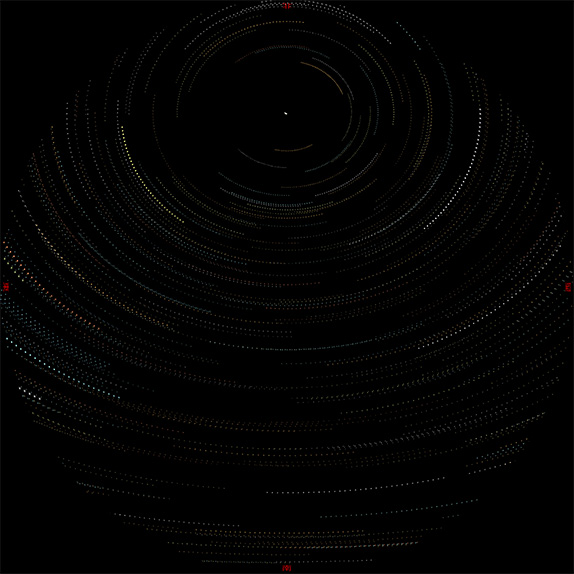
Display of the sun’s movement through the spring equinox, the summer solstice, the autumn equinox, and the winter solstice.
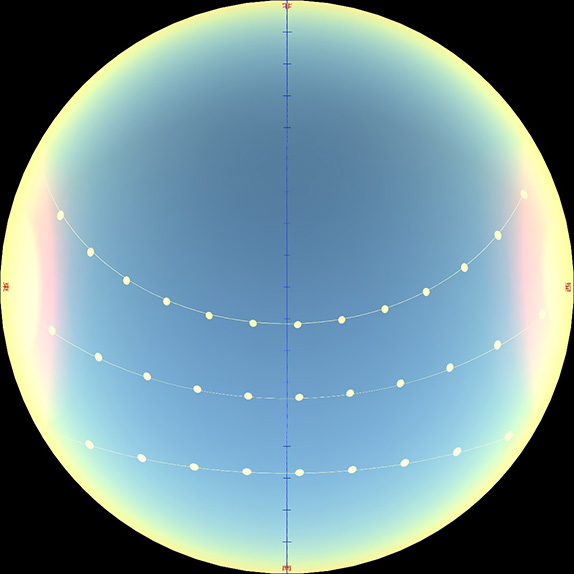
Display of the daily differences in position of the moon, and its phases
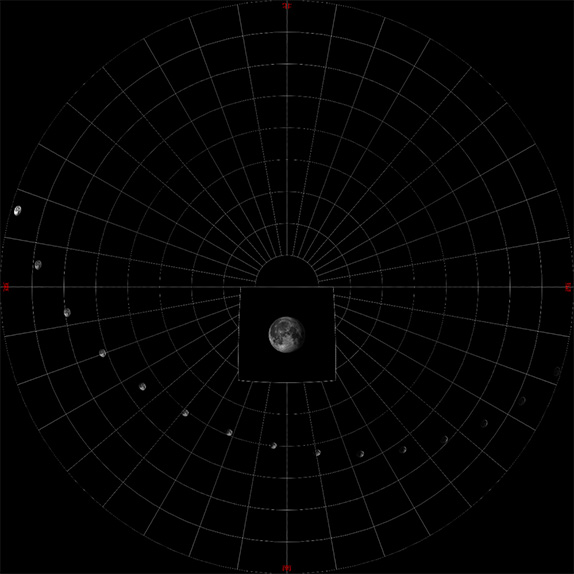
Display of the Milky Way using visible light/infrared light/x-rays/gamma rays/electromagnetic waves, etc.
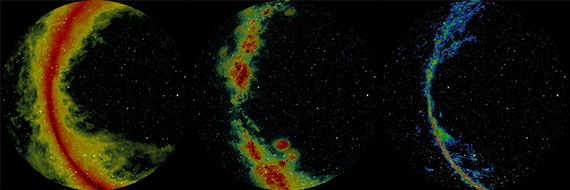
Accurate and realistic reproduction of total solar eclipses, annual eclipses, and total lunar eclipses
Proper motion of fixed stars using time changes
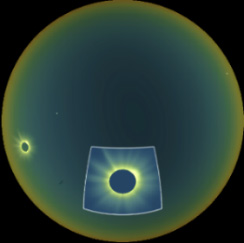
Recreation of 2012 eclipse in Cairns
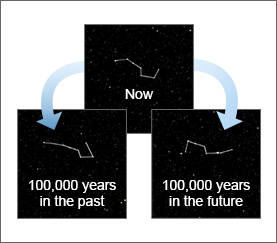
The Big Dipper: now, past, and future
Space Mode (the stars as seen from space)
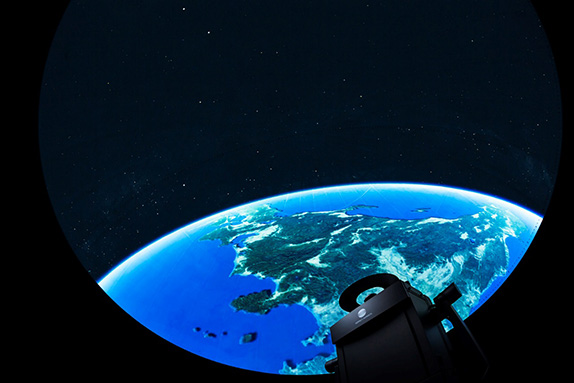
▼Features
- Space journey simulation with the space walk/travel function.
- Equipped with high resolution overview function
- 3D models included as standard
- Viewing possible from any extraterrestrial location
- Equipped with GIS (Geographic Information System) concerning the Earth’s environment
- Texture application based on the latest observation data
Space journey simulation with the space walk/travel function.
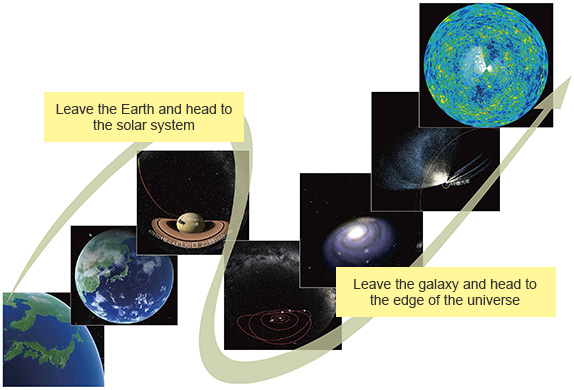
Equipped with high resolution overview function
Google Earth TM surface image data and JSI (Japan Space Imaging Corporation) high-detail data are used to display the surface of the Earth, and from your planetarium you can rise into the sky to get an overview of the Earth, and then move off into the universe while projecting live action images . Projection of the moon’s surface uses ultra-detailed topographical data observed and captured by the Kaguya lunar orbiter. Also included are surface images for Mars.

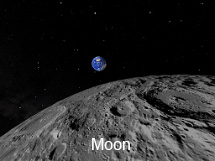
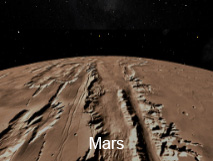
Terrain overview experience screen
Here you can easily experience the terrain overview you can see with this product.
You can zoom in/zoom out with the + and – buttons on the right of the screen
Related links
3D models included as standard
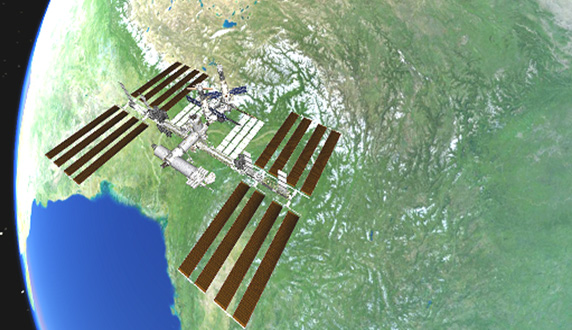
As well as the ISS, also included are 3D models of the main celestial bodies including celestial bodies in the solar system, exploration spacecraft, nebulae and clusters of stars, and galaxies outside our own . This enables simple and instant projection of space travel simulations that are both scientifically accurate and highly realistic.
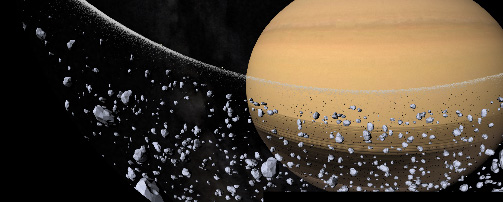
Ice blocks in the rings of Saturn also represented in 3D
Viewing possible from any extraterrestrial location
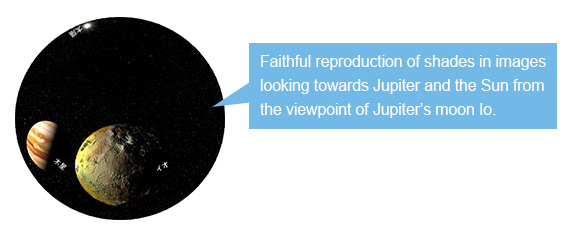
Uses the latest texture
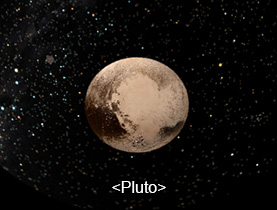
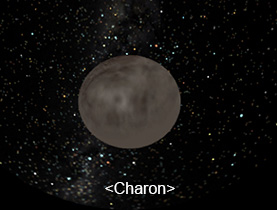
Equipped with GIS (Geographic Information System)
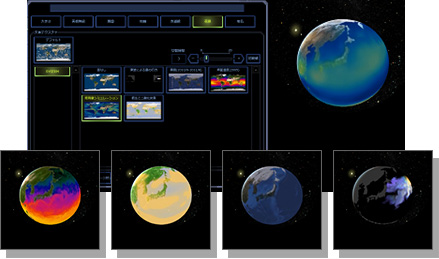
A projection function that visualizes data relating to the global environment
This enables data held by NASA concerning the global environment to be mapped over images of the Earth.
Looking at an overview of the Earth while projecting data and visual materials for the global climate, nature, or other such aspects of the Earth helps to improve understanding of the global environment and foster a desire to protect it.
Other information
- With the multimedia function that comes as standard, the Global Media Σ can easily handle a range of content such as movies, still images, and music, and ‘flying’ projection in which an object appears to be coming towards the audience is possible by using a floating image for the display of a still image. It can also be used to display images in presentations and music concerts.
- Included as standard is a Dome Mode that enables you to project a still image or movie in whichever direction you want by swiping on the tablet used for operation.
- A full lineup of interactive functions including live capture* that enables images from HDMI output from an external device to be corrected for distortion and displayed anywhere on the dome, and talking cast*, which allows you to manipulate a 3D character projected onto the dome in real time.
*Optional functions
As well as planetarium and content projection, there are a range of functions included that are useful for things such as projecting materials for presentations or concerts that use night sky or full dome images.

